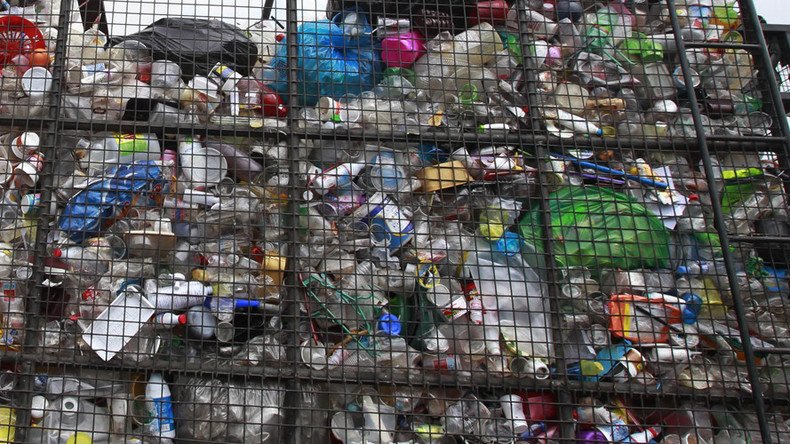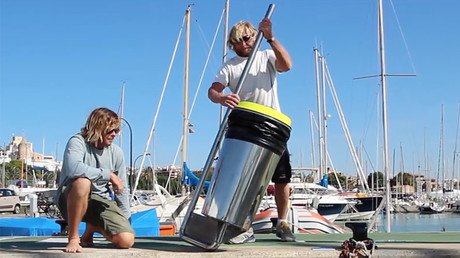Earth ‘covered in plastic’: 5bn tons of waste has contaminated marine life, entered food chain

Some 5 billion tons of plastic waste are littering our planet and the total amount is enough to wrap the Earth in clingfilm, a new international study has found. Scientists compare the grave pollution levels to a start of a new geological epoch.
Since the end of World War II, mankind has produced about 5 billion tons of plastic and now the remains of water containers, supermarket bags, polystyrene lumps, compact discs, cigarette filter tips, nylons and other plastics can be found everywhere, a team of scientists led by Professor Jan Zalasiewicz from Leicester University has found in a study titled, “The Geological Cycle of Plastics and Their Use as a Stratigraphic Indicator of the Anthropocene.” The study has been published in the journal “Anthropocene.”
Plastic was found on the ocean floor, remote islands, buried underground in landfill sites and even in polar regions which used to be considered as pristine zones before 2014, when significant amount of plastic were found frozen in the Arctic Sea.
“The results came as a real surprise. We were aware that humans have been making increasing amounts of different kinds of plastic – from Bakelite to polyethylene bags to PVC – over the last 70 years, but we had no idea how far it had traveled round the planet,” The Guardian cited Zalasiewicz as saying.
“It turns out not just to have floated across the oceans, but has sunk to the deepest parts of the sea floor. This is not a sign that our planet is in a healthy condition either,” he said.
Plastic doesn’t just pollute the planet, the scientists say, but has become a part of the food chain – a factor that has a colossal environmental effect.
“Just consider the fish in the sea,” Zalasiewicz said, referring to study data that shows the extraordinary degree to which fish caught in oceans have been polluted with plastic.
“A vast proportion of them now have plastic in them. They think it is food and eat it, just as seabirds feed plastic to their chicks. Then some of it is released as excrement and ends up sinking on to the seabed. The planet is slowly being covered in plastic,” he added.
READ MORE: New Mexico planning to sue the US government over toxic Colorado mine spill
Sometimes wildlife adapts to plastic pollution – for example, on islands such as Diego Garcia hermit crabs are using plastic bottles as homes. But largely, the consequences of plastic spread are negative – lots of seabirds and turtles, for example, get entangled in plastic and drown or choke to death.
Zalasiewicz and his team believe that the spread of plastic in the last 70 years has had such a grave effect on the planet that it can be viewed as a marker for a new geological epoch on the Earth, called Anthropocene, which has put an end to the Holocene era that began about 12,000 years ago.
“Plastics are already present in sufficient numbers to be considered as one of the most important types of ‘technofossil’ that will form a permanent record of human presence on Earth,” the study concludes, according to the Daily Mail.
Humankind produces about 300 million tons of plastic annually, and the manufacturing figures continue to grow, the paper says. Plastic degrades very slowly, so it takes plastic bags and bottles about 200 years to degrade.













